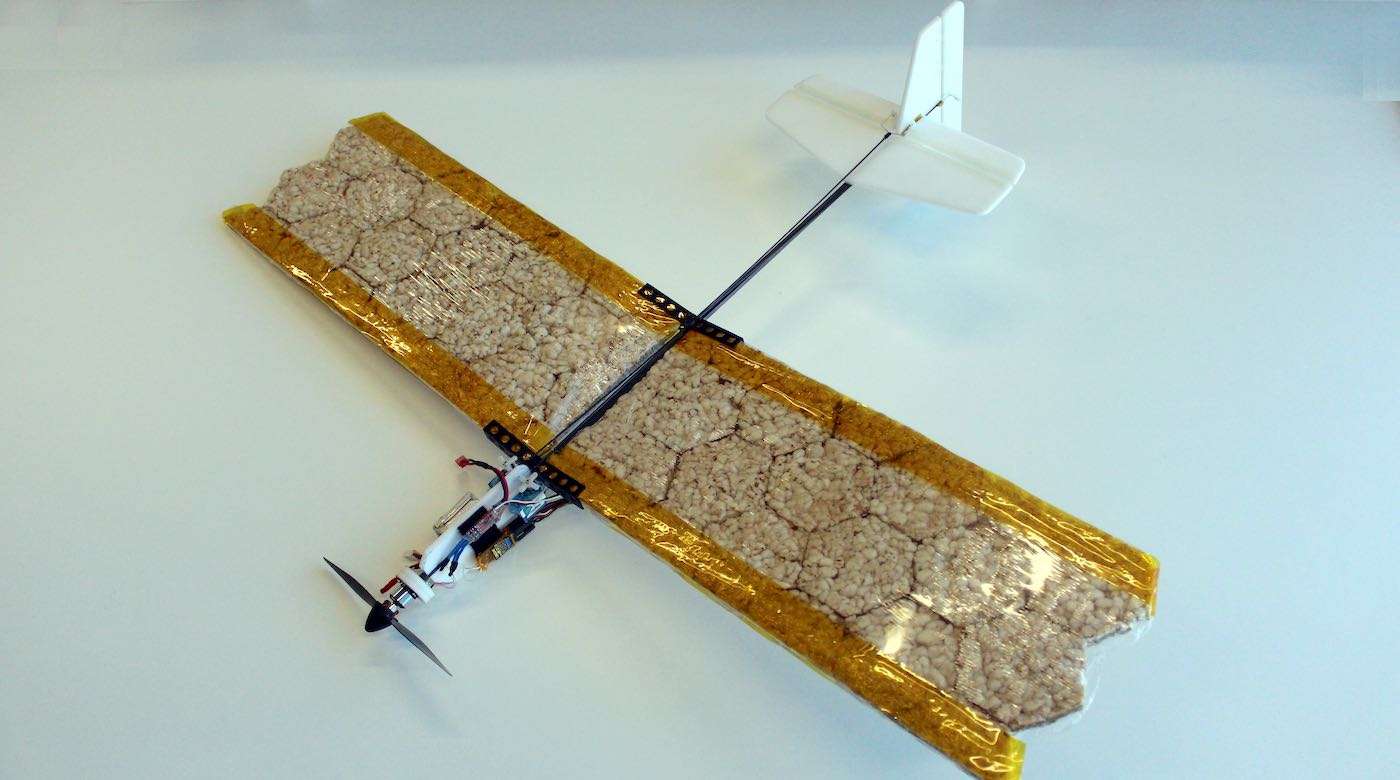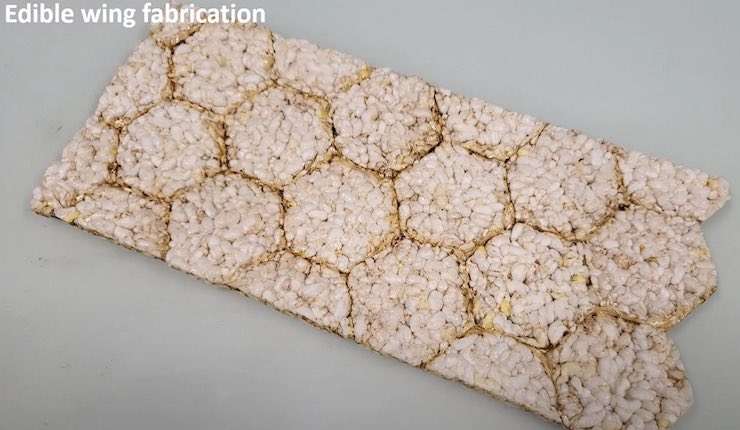Park Finds Fungus so Rare in UK that Cage is Erected to Protect It from Collectors Who Prize It for Health
The Lost Gardens in Cornwall found not one, but two super rare fungi—protected at the highest level—on some logs which they caged off.

Drones can be crucial during natural disasters by transporting supplies to people in need, but they can only carry about 30 percent of their mass as payload.
What if the delivery drones themselves were made of food? Now, researchers have developed a small flying craft with wings made of rice cakes.
The team at the Swiss Federal Institute of Technology in Lausanne (EPFL) decided the answer was to make the wings perform both as functional for flight and as cargo at the same time, so the drone could deliver more life-sustaining nutrition or medication.
To fashion the wing, the rice cakes are laser-cut into hexagonals and fixed together by gelatin.
These are then wrapped in protective plastic, before being affixed to the flying element.
Corn starch and corn starch with chocolate were both trialed as adhesives, but gelatin displayed stronger properties.
A prototype saw the drone able to fly 10 meters per second (32 feet). Now, the team wants to transform other nonedible pieces, by suggesting that structural components, such as an aileron or rudder, could be 3D-printed of edible material.

They are also looking at ways to transport water onboard.
The wingspan of about 27 inches (70 centimeters) results in enough rice cake and gelatin glue to deliver the equivalent of one breakfast serving-with 80 grams remaining for a payload of vitamins or water.
The lead author, Bokeon Kwak, told IEEE Spectrum the wing tastes like "a crunchy rice crisp cookie with a little touch of raw gelatin."
The research has been documented in a study paper entitled Towards Edible Drones for Rescue Missions: Design and Flight of Nutritional Wings, and is just one application of EPFL's research initiative called RoboFood, which seeks to develop edible robots in a way that maximizes both performance and nutritional value.
FLY This Innovation to Drone-Lovers on Your Social Media Newsfeed…
Be the first to comment